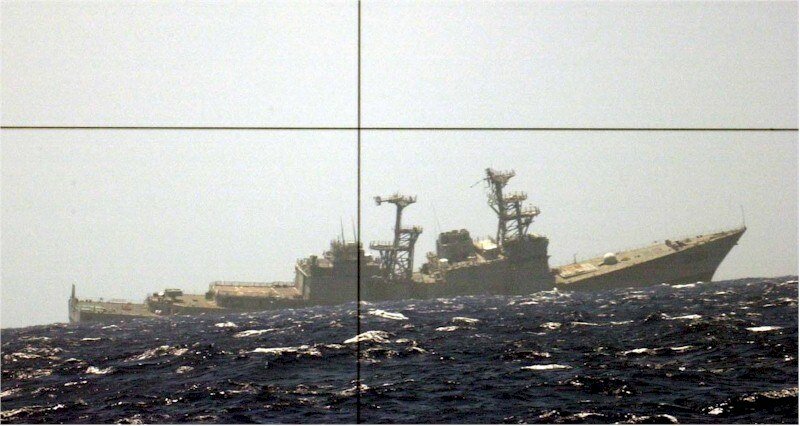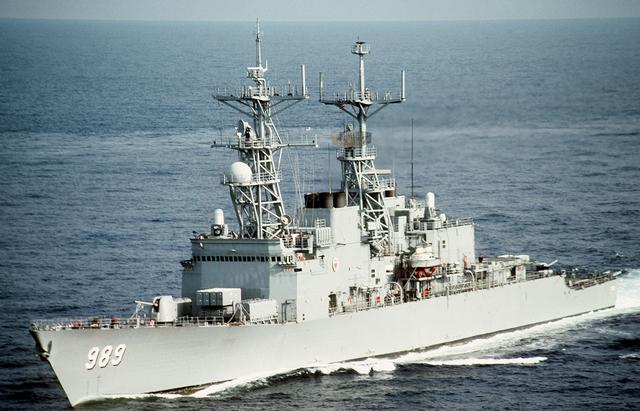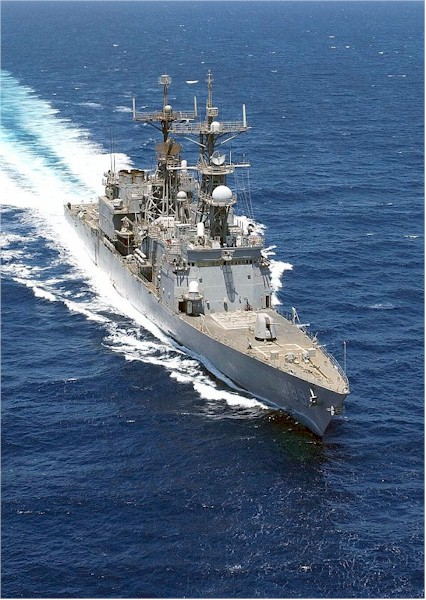Question. Beyond the 80's New Threat Upgrade. Was is possible for VLS replacing the Mk 26 Launchers and ABL's on top of the no-longer utilized hanger a possibility? If so how many VLS Cells? 32 Forward + 64 Aft. How much of the hanger space could be utilized for VLS?
Each member of the class also received Tomahawk cruise missile armored box launchers. The Tomahawk missiles were installed, even though this meant the removal of the LAMPS helicopter as it was found that the elevator and below-deck hangar proved problematic during aviation operations.
With the possibility of 98+ VLS cells and nuclear power plants, these platforms could have been extremely powerful surface combatants in their own right. This would have enabled them to operate the full spectrum of SAMs, TLAM and VLA weapons. I understand their primary role was nuclear carrier escort, but the potential was awesome. I know there was also a propossal for a more modest Iowa Class proposal adding VLS (4 x 64) in place of the 8 ABL's giving them a substantial firepower upgrade as well. The Cold War and 600 Ship Navy ended these possibilities. How likely was it ti happen had the Cold War not ended?
- Mark 26 Mod 0 - 24 missiles, forward Virginia-class cruiser
- Mark 26 Mod 1 - 44 missiles, aft Virginia-class cruiser
Each member of the class also received Tomahawk cruise missile armored box launchers. The Tomahawk missiles were installed, even though this meant the removal of the LAMPS helicopter as it was found that the elevator and below-deck hangar proved problematic during aviation operations.
With the possibility of 98+ VLS cells and nuclear power plants, these platforms could have been extremely powerful surface combatants in their own right. This would have enabled them to operate the full spectrum of SAMs, TLAM and VLA weapons. I understand their primary role was nuclear carrier escort, but the potential was awesome. I know there was also a propossal for a more modest Iowa Class proposal adding VLS (4 x 64) in place of the 8 ABL's giving them a substantial firepower upgrade as well. The Cold War and 600 Ship Navy ended these possibilities. How likely was it ti happen had the Cold War not ended?



